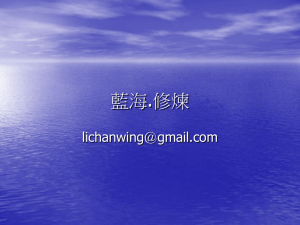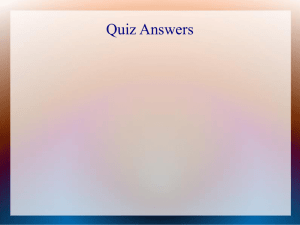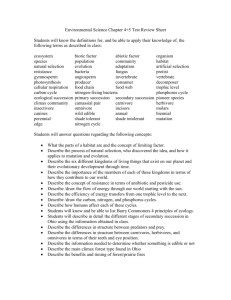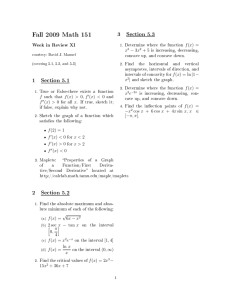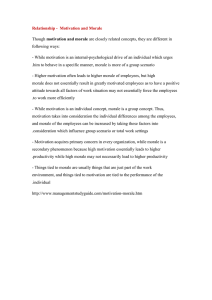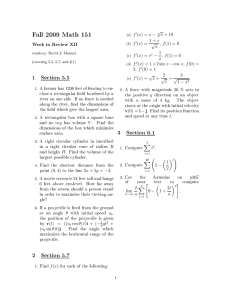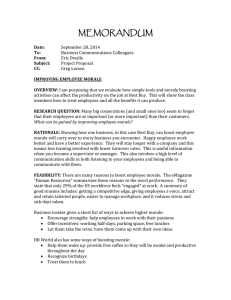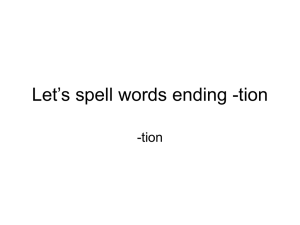What Drives Change?
advertisement
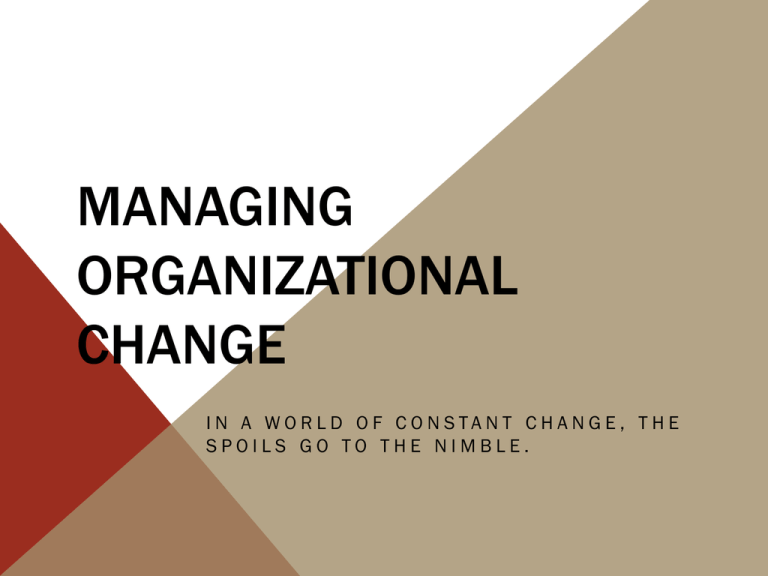
MANAGING ORGANIZATIONAL CHANGE I N A WO R L D O F C O N STA N T C H A N G E , T H E SPOILS GO TO THE NIMBLE. More jobs More participation in decisions More flexible work arrangements More leisure time More information More rights Professional growth Technology Psychological contract Automation Employee motivation & involvement More broadly-skilled employees Employees willing to work where they are needed More freedom to pursue company aims More legislation controlling industry More collaboration with employers WHAT DRIVES CHANGE? C o mpeti tion Unions Te c h n o logy Politics L e g i sla tion Social/ I nternal Values E c o n o my At t i t u d e s o f E mp l oye e Regulator s Demograp hics Culture Customer Focus Globalization We live in an era of risk and instability and the ability to read and act on signals: • To experiment • To manage complex systems • To mobilize CHANGE • Correct diagnosis of the nature of the change challenge • Early development of shared understanding • Enrichment of shared understanding GUIDING CHANGE • Establish a sense of urgency • Create a limited and focused strategies agenda • Rapid, strategic decision making and deployment SPEED • Identification and management of sources of resistance – securing a favorable balance of power throughout the organization • Utilizing key organizational enablers • Demonstrated leadership commitment MOMENTUM • Plays a major role in organizational change • Procedure & processes remain important • People have to understand what is happening or what is going to happen COMMUNICATION • Each step of the change process requires communication • Designing change is not possible without documenting its necessity COMMUNICATION If you do not have communication, you: Destroy commitment Damage employee morale Generate huge resistance and hostility As a change agent, what are you going to use? • Mission of the organization • Vision of the organization • Key stakeholders • Benefits of change • Total involvement CHANGE Being a change agent is: • Setting a new leadership style • Creating a shared vision for quality results • Establishing process improvements • Fostering employee buy-in • Specific management of results • Incorporating training • Continued improvement CHANGE Also known as “Hardware” • Rules, policies, procedures • Span of control • Communications processes • Organizational structure form • Process flows • Equipment change • Information systems ORGANIZATIONAL PROCESS Also known as “Software” • Transforming behavior • Knowledge, skills, abilities, or other characteristics • Reward systems • Training PEOPLE Managing change means having the right people on board that will: *not only deal with change, but pursue it! SUCCESSFUL CHANGE One more question: What happens when a key person leaves? • Vulnerability • Knowledge is lost • Continuity interrupted • Morale and motivation decline Succession Planning in Change: • Talent management • Ongoing process • Identifying • Assessing • Developing leadership • Inventory of openings • Position criteria • Potential candidates SUCCESSION PLANNING • • • • • • • • • • • • History of employee Management/technology competencies Assessment Development Training Educational experiences Assignments and projects Job rotation Mentoring Individual study Volunteer work Action learning DEVELOPMENT
